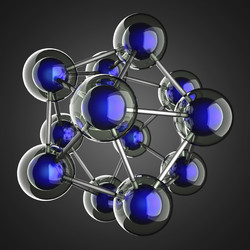Attosecond lasers peer into silicon crystals
In semiconductor materials, like silicon, electrons are normally localised around the atoms forming the crystal. These particles cannot move and thus contribute to the flowing current produced when a voltage is applied. However, when these materials are exposed to light, some of the electrons absorb enough energy to tunnel through the barrier that keeps them bound to atoms and start to move through the material. The mobile electrons make the semiconductor material conductive, allowing engineers to make silicon switches known as transistors ─ the building blocks of all digital devices. Within the EU-funded project ATTOTRON(opens in new window) (Attosecond electron processes in solids), scientists used attosecond pulses of soft X-ray light to follow the electrons' transition. Specifically, the scientists first exposed silicon crystals to ultrashort flashes of visible light emitted by a laser source. Subsequently, the samples were illuminated with X-ray light pulses of only a few attoseconds' duration. This methodology allowed the scientists to take 'snapshots' of the temporal evolution of the excitation process triggered by laser light. In analysing their data, the ATTOTRON team found strong evidence that the electrons' transition makes atoms rebound. They showed that initially only the electrons reacted while the atomic lattice remains unaffected. After the laser pulses had left the samples, the lattice rearranged in response to the collective motion of electrons, turning part of the absorbed energy into heat carried by waves called phonons. The temporal resolution of attosecond lasers allowed the scientists to resolve these extremely brief electronic processes that seemed too fast to be approached experimentally. On the other hand, unambiguous interpretation of the experimental data was facilitated by quantum dynamic simulations. The modelling effort covered both the electron excitation as well as the interaction of X-ray pulses with the silicon crystal. The findings of the ATTOTRON project regarding ultrafast electron dynamics in silicon have been published in the renowned journals of Nature(opens in new window) and Science(opens in new window).







